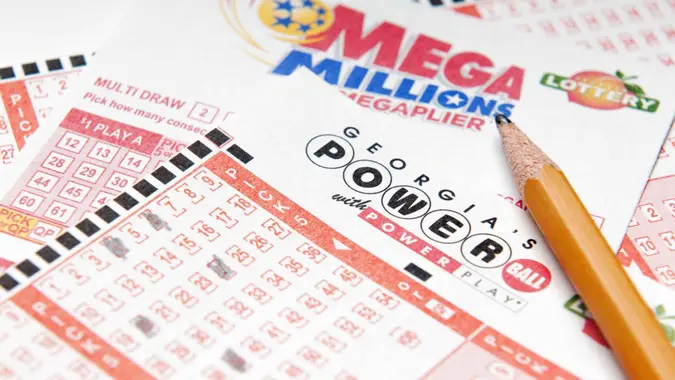I Quit My Full-Time Job — Now I Make $15K a Month as a Freelancer

Commitment to Our Readers
GOBankingRates' editorial team is committed to bringing you unbiased reviews and information. We use data-driven methodologies to evaluate financial products and services - our reviews and ratings are not influenced by advertisers. You can read more about our editorial guidelines and our products and services review methodology.

20 Years
Helping You Live Richer

Reviewed
by Experts

Trusted by
Millions of Readers
Anna D. spent years working as a staff writer at a popular women’s magazine. She enjoyed the stability of a full-time job with benefits, but always felt stifled by the lack of creative freedom. When budget cuts started impacting the editorial team, Anna saw it as an opportunity to pursue her dream of freelancing full-time.
“I just couldn’t take the constant revisions and edits from my bosses anymore,” Anna said of her former staff writer role. “As a freelancer, I have so much more control over my work and my time. It was a scary leap, but I don’t regret it for a second.”
These days, Anna pieces together a lucrative income of around $15,000 per month through a variety of freelance gigs and side hustles. Here’s how she manages the freelancer life.
Leveraging Former Connections
While Anna had to quit her staff job, she made sure to stay on good terms with former colleagues and higher-ups at the magazine. “Those connections were crucial when I first went freelance,” she shared. “A lot of my old bosses and coworkers now hire me for one-off freelance assignments since they know my writing style and abilities.”
This income stream of rehired clients provides a solid base of steady work for Anna each month. She frequently gets emails for ghostwriting ebooks, white papers, website copy and more from her former magazine contacts.
Finding Gigs Through Online Groups
In addition to return clients, Anna has found a wealth of freelance opportunities through online groups on Facebook, Reddit and more. “There are whole communities out there for freelance writers to find gigs and network,” she said. “I’ve gotten jobs writing anything from dating advice columns to product descriptions just from people posting in these groups.”
Anna has become an active member of several freelance writing groups where she trades tips and leads with others in her field. “It helps to have that community of support when you’re riding solo as a freelancer,” she explained.
Directly Responding to LinkedIn Posts
Anna has also built up a strong client base simply by monitoring LinkedIn posts from companies and individuals looking to hire writers. “Whenever I see someone posting that they need writers or content creators, I immediately send them my portfolio and a proposed rate,” she shared. “You’d be surprised how much work you can get just by being proactive on LinkedIn.”
This hustle mindset of consistently seeking out and replying to new potential freelance gigs has served Anna well. She tries to send out at least 10 tailored job inquiries per week to recruit new clients.
Selling Handmade Products
Of course, freelance writing isn’t Anna’s only income source these days. She’s been able to supplement her income by leaning into creative side hustles she’s passionate about, like sewing handmade pet beds and accessories.
“I’ve been an amateur seamstress for years, so I started selling custom dog beds in fun, quirky fabric designs at some local shops,” said Anna. “It’s become a surprising side revenue stream — I can make up to $1,000 in a good month from my little pet business!”
What started as a hobby making presents for her rescue pup has blossomed into a solid side gig for Anna. She’s started taking custom orders from friends, family and local pet stores who love her crafty creations. Her long-term goal is to expand her handmade pet products into their own full-fledged small business.
Through this patchwork of freelance clients, online group leads, responding to job posts and creative side hustles, Anna has been able to successfully transition into the freelance lifestyle. She’s found freedom, flexibility and a way to fully lean into her passions.
“There’s no way I’d go back to a 9-to-5 office job after experiencing this freelance lifestyle,” Anna shared. “The hustle is hard, but so rewarding when you can create the work-life balance you want and do work you really care about. I just want to keep growing my freelance empire!”
How To Transition From Full-Time to Freelance
Anna’s leap into full-time freelancing didn’t happen overnight. It took strategic planning, hustle and developing a diverse revenue stream. If you’re hoping to ditch your 9-to-5 for freelance flexibility, she offers the following advice.
“My first tip is to start freelancing on the side before you quit your job,” Anna said. “Test the waters with some side gigs during nights and weekends. It will help you get experience, build up a client base and make sure you can truly handle being a full-time freelancer.”
Anna spent over a year taking on small freelance writing jobs while still working at the magazine. This allowed her to get a feel for the freelance lifestyle and develop efficient marketing and work processes before depending on it as her only income source.
Another key? “Have a significant financial safety net saved up,” she advised. “Things will be inconsistent starting out, so you’ll want 6 months to a year of living expenses covered just in case you hit a dry spell finding new gigs.”
Anna had stockpiled more than $30,000 before leaving her staff job. This gave her a healthy runway to get her freelance career off the ground without the constant stress of wondering where her next paycheck would come from.
Perhaps most importantly, Anna recommends aspiring freelancers “get aggressive and creative about building your client pipeline from multiple sources.” As her income breakdown shows, she earns freelance income from former co-workers, online job groups, replying to LinkedIn posts and more.
“Don’t rely on just one revenue stream — diversify how you get jobs through networking, prospecting, making connections and exploring passion projects that could become side income,” she explained. “That diversified approach is what allows me to have such a high freelance income now.”
Lastly, Anna emphasizes the freelance mindset of consistently hustling and marketing your services. “You can’t just get lazy and sit around waiting for the work to come to you,” she said. “Freelancing is running your own business, so you need to constantly be pitching yourself and seeking out new opportunities.”
By taking calculated risks, saving up financial reserves, diversifying her work and revenue sources, and continually hustling to find new gigs, Anna was able to successfully walk away from her staff job and create a thriving freelance career. With determination and sustainable strategies in place, you can take the freelance leap too.
More From GOBankingRates
 Written by
Written by  Edited by
Edited by 

























